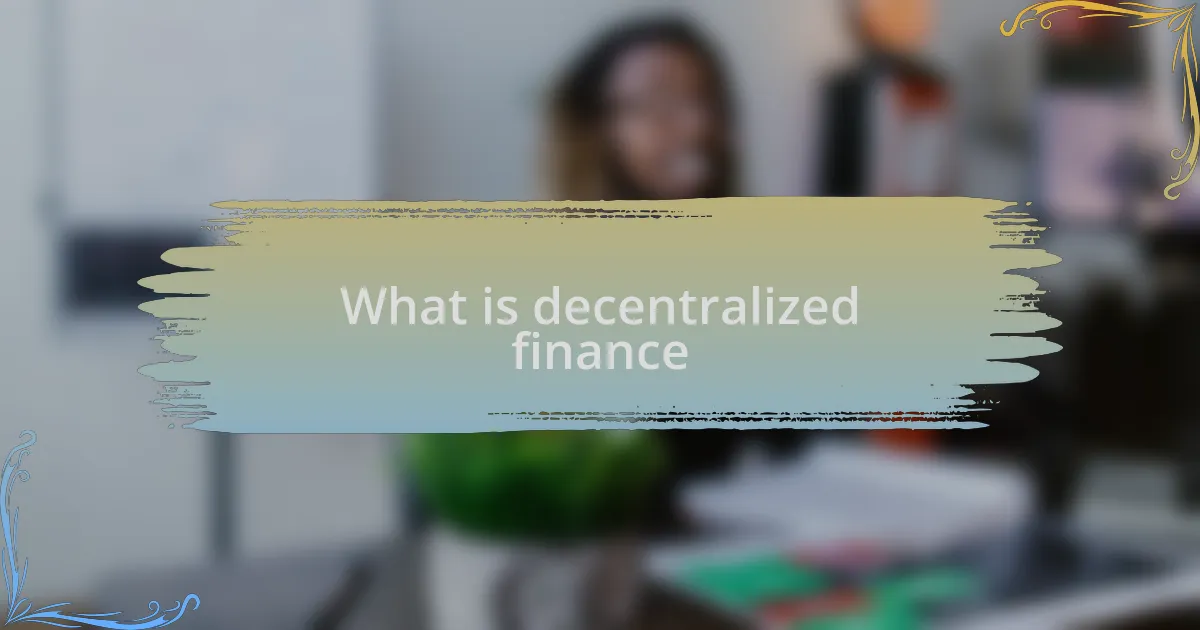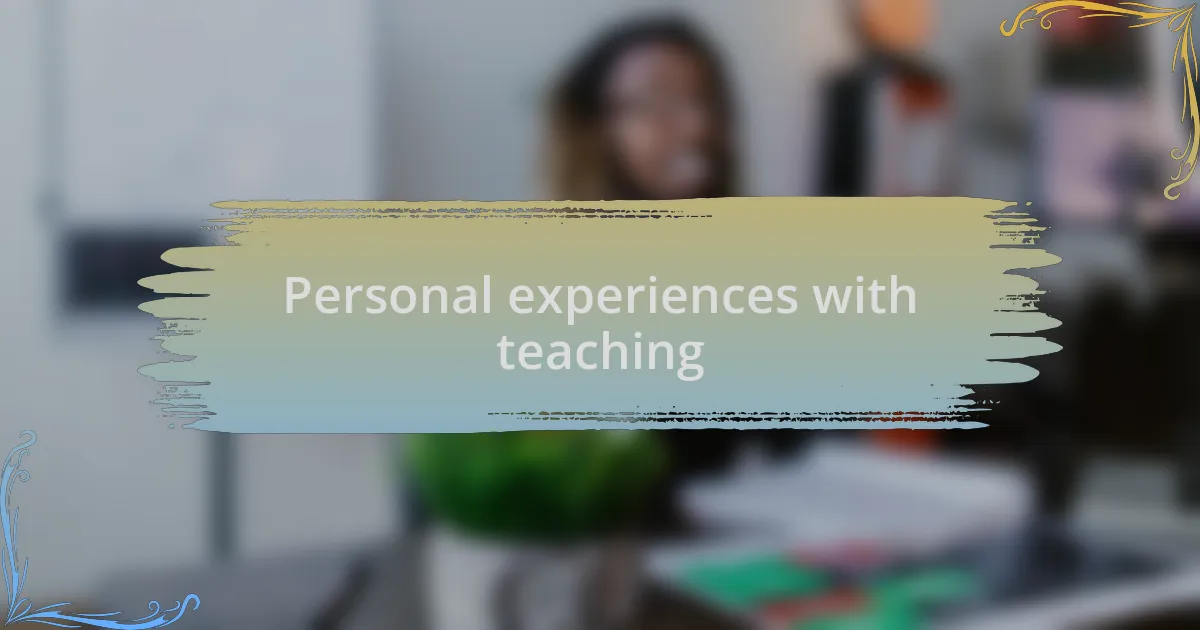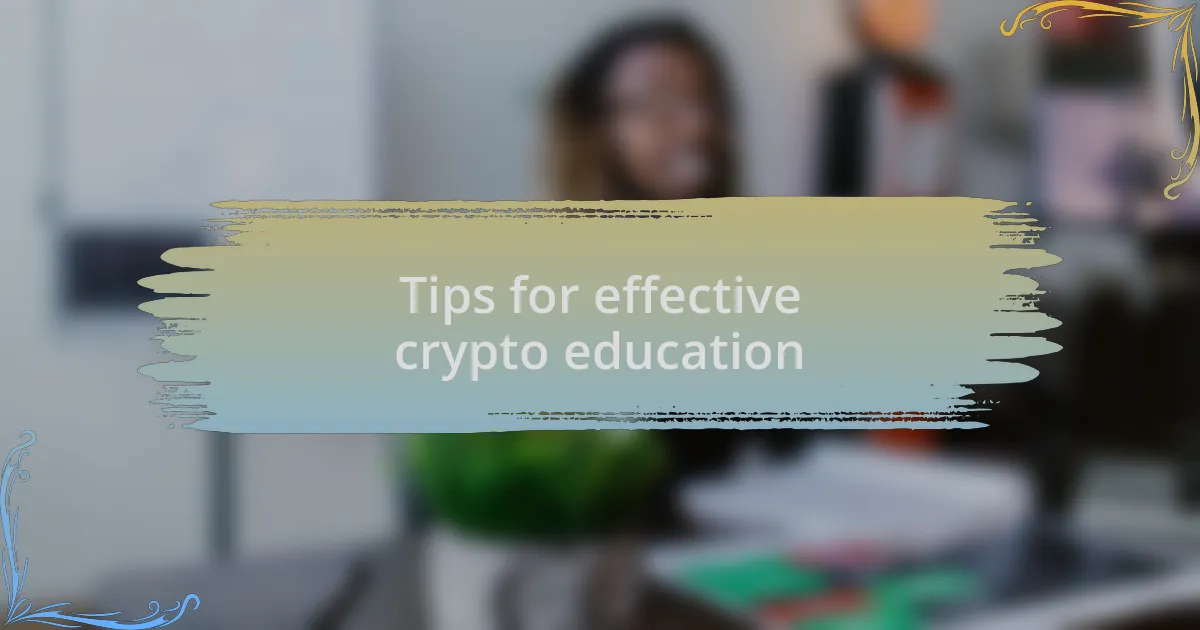Key takeaways:
- Decentralized finance (DeFi) empowers users by removing intermediaries and enhancing transparency through blockchain technology and smart contracts.
- Crypto education is essential for understanding financial principles, avoiding misconceptions, and fostering confidence in financial decision-making among young learners.
- Engaging teaching methods, such as analogies, visuals, role-playing, and hands-on activities, enhance comprehension and make learning about decentralized finance enjoyable and relatable.
- Personal experiences and storytelling in teaching create relatable connections and encourage open discussions about risks and challenges in the world of crypto.

What is decentralized finance
Decentralized finance, often called DeFi, is a groundbreaking movement that aims to reshape how we think about money transactions and financial services. It operates on blockchain technology, allowing users to perform transactions directly without intermediaries like banks. Isn’t it fascinating to imagine a world where we can send money or lend assets without waiting for permission from a traditional bank?
When I first dived into DeFi, I was amazed by the concept of smart contracts—a kind of digital agreement that automatically executes when certain conditions are met. It felt like I had discovered an entirely new way to make things happen without the red tape often associated with traditional finance. This technology empowers users, offering transparency and control over their assets, which can be incredibly freeing.
Moreover, DeFi services come in many forms, from decentralized exchanges to lending platforms, creating a digital ecosystem where anyone can participate. Have you ever thought about how this might change the game for young investors or enthusiasts? As I explore this space, I see endless possibilities for learning and growth, hinting at an exciting future where financial literacy is more accessible than ever.

Importance of crypto education
Understanding crypto education is vital, especially as we navigate our increasingly digital world. When I first learned about cryptocurrencies, it was like peeling back layers of understanding that opened my eyes to a whole new financial landscape. Without proper education, it’s easy to fall into misconceptions or even scams, which can discourage young minds from exploring the potential of decentralized finance.
It’s not just about understanding how to buy Bitcoin or trade on exchanges; it’s about grasping the underlying principles of security, privacy, and the technology behind it. I remember the sense of empowerment I felt when I first successfully executed a simple transaction on a decentralized exchange. This experience taught me that crypto education is not merely information; it’s a tool for personal empowerment that can inspire confidence in financial decision-making.
In a world where financial literacy is often lacking, crypto education stands out as a beacon of opportunity. Have you ever felt lost when confronted with financial jargon or complex ideas? By making these concepts accessible to young learners, we pave the way for a future generation that sees crypto not just as a trend but as a foundational aspect of their financial toolkit.

How to introduce crypto concepts
To begin introducing crypto concepts, I suggest starting with relatable analogies. When I first imagined Bitcoin as digital gold, it clicked for me. This comparison made it easier to grasp its value and scarcity, much like the shiny metal we often see in jewelry. Have you ever used common objects to explain complex ideas? This approach helps bridge the gap between unfamiliar terms and everyday experiences.
Next, incorporating visuals can significantly enhance understanding. I recall when I used a simple chart to explain how blockchain transactions work. Visual aids made the flow of data clearer and transformed abstract concepts into something tangible. Isn’t it fascinating how our brains often respond better to images than text alone? Engaging graphics or videos can spark curiosity and make learning about crypto feel more interactive.
Lastly, fostering discussions around real-world applications can create excitement and interest. Sharing stories about how decentralized finance can change lives or empower individuals can resonate deeply. I think back to when I read about a young entrepreneur successfully launching a startup funded by crypto investors. Can you imagine the possibilities if kids see how they can leverage these tools? Framing crypto education in this context not only illustrates its relevance but also motivates young learners to explore and innovate.

Engaging activities for learning
When it comes to engaging activities for learning about decentralized finance, I’ve found that interactive games can be incredibly effective. I remember organizing a classroom simulation where students traded digital tokens for various rewards. It was thrilling to see their faces light up when they completed transactions and experienced market fluctuations firsthand. Isn’t it amazing how play can make even complex concepts like liquidity and staking feel accessible?
Another activity that works wonders is creating your own cryptocurrency. I guided a group of kids to brainstorm unique coin ideas, complete with logos and value propositions. They were so invested in their creations that they began discussing supply and demand, eagerly explaining what made their coins special. Have you ever seen young minds light up with passion? It’s a powerful reminder of how hands-on learning can ignite curiosity.
Lastly, role-playing scenarios can be a fun way to dive deeper into decentralized finance. I once facilitated a mock negotiation session where kids played the roles of investors, developers, and users. Watching them navigate the challenges and strategies was eye-opening. How do you think role-playing impacts understanding? From my experience, it allows learners to embody the concepts, making them feel more confident and engaged in discussions about real-world applications of finance.

Personal experiences with teaching
When I started teaching decentralized finance, I was excited but a bit anxious about how to introduce such a complex topic to young learners. One memorable experience involved using stories of real-world crypto entrepreneurs to illustrate concepts. I vividly recall a student raising their hand, eyes wide, as they connected a class discussion about wallets to a character who faced challenges similar to what they might encounter in business. It was exhilarating to see that light bulb moment—a tangible understanding sparked by storytelling.
During workshops, I often share my own journey with crypto, recounting the mistakes I made and the lessons I learned. I remember one session where I discussed a failed investment I made early on. The kids listened intently, and one student boldly admitted they were feeling the same pressure to make perfect choices. In that moment, we bonded over the reality that mistakes are part of growth. I find that sharing my personal experiences not only makes the learning environment more relatable but also reminds them that everyone has a learning curve.
Creating a safe space for questions has been another essential part of my teaching experience. I remember one class where discussions flowed freely, and students were not afraid to ask about the risks involved in investing. One child, in particular, asked, “What do I do if I lose money?” I appreciated that honesty—it was a moment we could all relate to. Together, we talked about managing risk and the importance of research, deepening their understanding while fostering an atmosphere where curiosity is welcomed.

Tips for effective crypto education
One powerful tip for effective crypto education is to simplify complex concepts. I once conducted a workshop where I used everyday analogies to explain blockchain technology. By comparing it to a digital notebook that everyone can see but only a few can edit, I saw the students’ faces light up with understanding. Suddenly, an intricate system felt accessible, and questions began to flow, showing me they’ve grasped the core idea.
Another approach that I’ve found invaluable is to encourage hands-on activities. During a recent session, I divided the kids into small groups to create their own mock crypto projects. Watching them brainstorm ideas, from naming their coins to discussing potential uses, was nothing short of inspiring. It highlighted the importance of creativity in learning; I could sense their excitement as they transformed abstract concepts into tangible products.
Finally, fostering discussions around real-world applications helps connect lessons to their everyday lives. I remember discussing how cryptocurrencies can impact local businesses. One student shared how a favorite café started accepting crypto payments, and suddenly, our conversation shifted from theory to personal relevance. That connection made the learning experience tangible, proving that real-world examples can ignite a passion for exploring the evolving world of crypto.